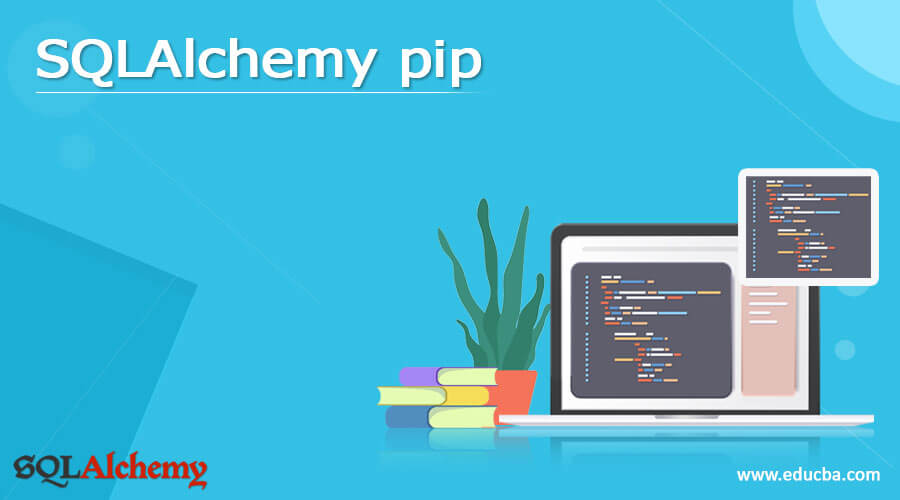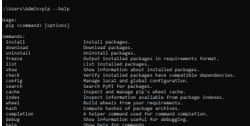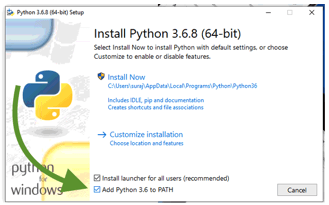Updated March 16, 2023
Introduction to SQLAlchemy pip
The sqlalchemy pip is one of the python-based package comments. It is used in the ORM [Object Relational Mapper] tool that can be used in the application type of developers. It is in the full power of the sql flexibility. It is more designed and efficient for high-performing database accesses adapted to the simple and complex type of pythonic domain language changes synchronization.
What is SQLAlchemy pip?
Sqlalchemy is the python-based sql toolkit already related to the ORM, providing the application developers with power and feature flexibility. The ORM infrastructure will be the pythonic sql toolkits, the libraries used to perform the translation operation of python classes, and the complex type of queries and other mappings and translate the code into different mappings sql statements. Through modern release statements, the sqlalchemy operates the DBAPI implementation for the specific type of database. The SQL Expression language is the toolkit and its independent package for significant components; the schema and engine types are used for connection polling and dialect of the datas in the DBAPI. The sql expression language is the toolkit and is independent of the ORM package and the Core.
Installing SQLAlchemy pip
The sqlalchemy pip is the type of installation command, and it is the kind of installation package used to describe the bundles of the software that will be installed on the system. Mainly, it does not refer to the packages related to the python source code. It has the modules container and common python community which refers to the distribution packages, and it is not often used for a most preferred operating system like Linux distribution. We can download the get-pip.py file for storing the data directory using the python language installed on the sql toolkit for the Object Relational Mapper for open source. The cross-platform software released under the license file category pip is the python package manager with some utilities and is referred to as the project bundled for standard python language distribution for downloading the latest sqlalchemy versions. Anaconda and some other utility packages, also the software package bundles, are more triggered and use the current directory.
PIP is a package management system tool used to install and manage the software packages and libraries already written in the python language. These files are to be stored in the extensive online repository under the term in the python package index, named the PyPI. It has n number of categories. Voila is one of the open-source python libraries that can be used to turn on the jupyter type, and it’s a standalone web-based application. And also, it’s the kind of support and widget for creative web-based interactive dashboards and reports taken from the python libraries.
Pip install sqlalchemy is one of the main comments that can be used to install the sqlalchemy by using the command called pip. The conda is also called the anaconda package distribution of the python language. The following command will mainly be used for installing the sqlalchemy and other util packages. The DBAPI is also primarily referred to as the Database Application Programming Interface, built for the specific database to main dialect the systems to communicate with various DBAPI implementations and other databases. Many packages may include the PyPI hosts that called the requests, and it will be called the library that helps to interact with the web services to provide the complex and abstracting the http requests. To install the packages, we may give the pip command that includes the install command that may run the requests package.
In the above screenshot, we used python libraries in the command prompt; before that, we should install the Python language on the system properties and assign the same as the environment variables below.
Here I have installed and declared the python libraries in the environment path for the operating system if suppose we need any help regarding the pip command functional, that means we used the below command to get the help regarding the pip command.
Pip –helpThe pip–help command will help download the packages, and Package Installer for Python operation will allow for the latest version of the pip-like command.
Pip3 --versionWe can get the python-pip version for using the above command, and it also denotes the location of the pip command, which is already installed on the local drive path and includes the python 3.9 version.
In the above screenshot, we can install python using the GUI format. If we select the customized installation, the pip is not installed by default; if we choose the Install Now option, it includes the IDLE pip and file documentation.
Py -m ensurepip –upgradeAbove the command, we can ensure the pip command upgrades the required pip package. In GUI, we can select manually by using the Optional Features form dialog,
Here, the pip command will download all the required install python packages, which manually selects the required packages based on user requirements.
Example of SQLAlchemy pip
Given below is the example of SQLAlchemy pip:
In this case, I have installed the package called camelCase, which contains the camelCase fonts and other built-in functions which may be triggered by using the python libraries.
Command:
Pip install camelCase
import camelcase
vars = camelcase.CamelCase()
res = "welcome to my domain"
print(vars.hump(res))Sample Output:
In the above example, I installed the package called camelCase and used that package in the sample python program.
Conclusion
Sqlalchemy contains many default features, functions, and other util features, which may help to interact with the user datas from the front end to the backend. For example, the pip command is the default python command that allows the download of the required packages related to the project requirement.
Recommended Articles
This is a guide to SQLAlchemy pip. Here we discuss the Introduction, What is SQLAlchemy pip, how to install it, and examples with code implementation. You may also have a look at the following articles to learn more –










